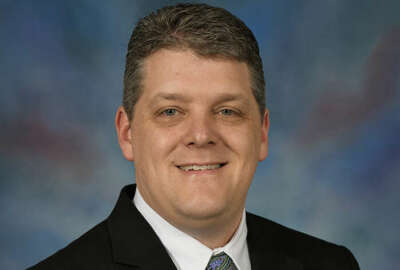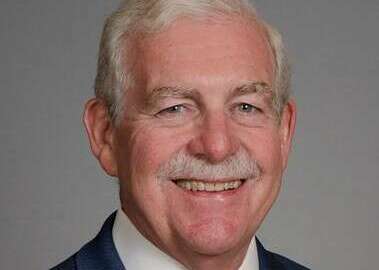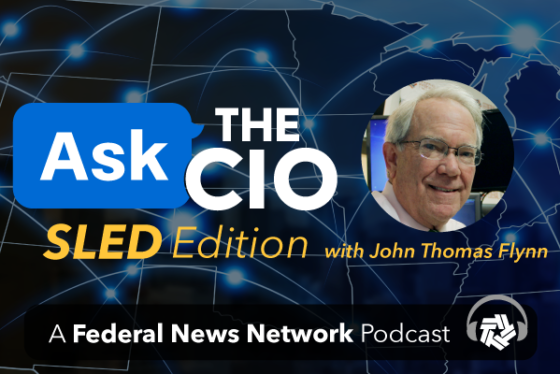
South Dakota CIO discusses continuing COVID impact, silver lining
South Dakota CIO discusses state's COVID response, plus how pandemic has forced state to expedite IT modernization along with rethinking old model business, and...
South Dakota CIO Jeff Clines began his job in Pierre this past April, right in the middle of the COVID-19 pandemic outbreak — and even in to the new fiscal year, COVID response is front and center.
Speaking with him recently we learned that even with the start of the new fiscal on July 1st, usually the opportunity to kick-off new IT initiatives, the Mount Rushmore State IT operations like in most others continue to be concentrated around the COVID impact.
“Things right now are very much focused on the COVID response. So there’s obviously the initial response where you’ve got websites to stand up, you got communications, we’re getting out and making sure people have the information and devices they need, and a lot of work with the Department of Health,” Clines said.
Still, on the horizon, Clines described a major project which will retire analog telephone lines, leveraging voice solutions, like Microsoft Teams, statewide. South Dakota will also be modernizing its legacy technology applications. “We’re trying to get away from those technologies where the skill set to maintain and run them is quickly vanishing as people retire,” he said.
Speaking of legacy systems I asked about South Dakota’s unemployment insurance system since so many states have encountered major problems due to the unemployment surge resulting from the pandemic. “We were able to handle it all right, but there were definitely spikes. There was definitely a surge. It was an all hands on deck type of approach,” Clines said.
Fortunately, the state was able to leverage support from various agencies to help answer the calls and get the forms filled out and processed.
“So you didn’t hear a lot about unemployment issues in the state of South Dakota, because really the team stepped up and helped each other and we were able to handle the surge.”
Some silver lining from pandemic
Clines also believes that there may be some silver lining to the pandemic.
“As I look back at the lessons learned and look at ways that we can modernize systems, I personally think that’s going to be one of the greatest values as we come out of COVID.”
He said that he wasn’t sure if modernized is the right word, but there has to be more of a transformation. “We need to take a look at the current practices and the underlying technology, and really try to align the two to deliver faster, easier processes for the people that need them.”
Prior to his South Dakota appointment, Clines was CIO for the Secretary of State in Illinois, and before that he worked in the private sector for a decade with the American Heart Association. He spoke of how that experience prepared him for his state CIO role.
“My management style is very much guided by my love for the theory of servant leadership, being out there and leading by example. I think the experiences I have with the American Heart Association, and others that are more service oriented really lead to developing that perspective,” he said.
He was also fortunate to have worked with a lot of amazing leaders in his career. “My hope is that I can live up to their examples over the years and really help people learn and grow themselves as well in technology, personal and professional categories as well.”
South Dakota’s CIO governance model
The CIO governance model being of particular interest among state CIOs, we discussed South Dakota’s approach. “We really don’t have a centralized model. The relationship with the different organizations and other cabinet members is more of the business relationship management model,” Clines said.
His team within his Bureau of Information & Telecommunications includes point of contacts who interact with other departments. “They are there, at the departments, helping them through their strategic plans, understanding technical requirements, and making sure we’re taking care of all issues from an audit perspective, compliance perspective, and things like that.”
With only four months into his job, Clines admits there are definitely challenges, increasing lines of communication and focusing on delivering customer service, and meeting those requirements has been a priority to get set up.
I mentioned Clines counterpart in neighboring North Dakota, CIO Shawn Riley, who with Arkansas CIO Yessica Jones, has embarked on an innovative interstate initiative involving mainframe backup, I asked Clines about similar activity in South Dakota.
“I’m definitely looking for opportunities to collaborate. South Dakota collaborated with North Dakota for a COVID-19 application that we put out, and we’re working with North Dakota and other surrounding states on cybersecurity initiatives.”
Such interstate cooperation is definitely something Clines is open to, and he is excited to explore with different states and CIOs the ways to enhance services to citizens and save money by collaborating.
IT – business alignment critical
Finally, on the always important relationship between the state CIOs and the state business programs, the so called IT–business alignment, Clines was effusive. He knows it is critical to impress upon his business program colleagues in other agencies the importance of information technology, and aligning it with business program strategy.
“What I’ve been doing, as I go out and visit with different secretariats, is just trying to help them get an understanding of what technology can do. I think sometimes the biggest trap is people get so focused in the day to day nitty-gritty that we don’t take time to step back and see how can we leverage technology to be able to drive efficiencies and streamline operations,” he said.
Pandemic forces new business model
On the same topic, Clines suggested there’s another benefit of the lessons learned from COVID. “The pandemic has really forced people that have been operating under the same model for years, just trying to drive services, now to take a step back and look at how can we be more efficient, and more efficient using technology.”
He calls this a natural discussion point because this old model is so prevalent in the industry or in the world today. “I think people, especially citizens, are expecting to be able to use a new model going forward to really interact with government agencies across the board.”
Copyright © 2025 Federal News Network. All rights reserved. This website is not intended for users located within the European Economic Area.






